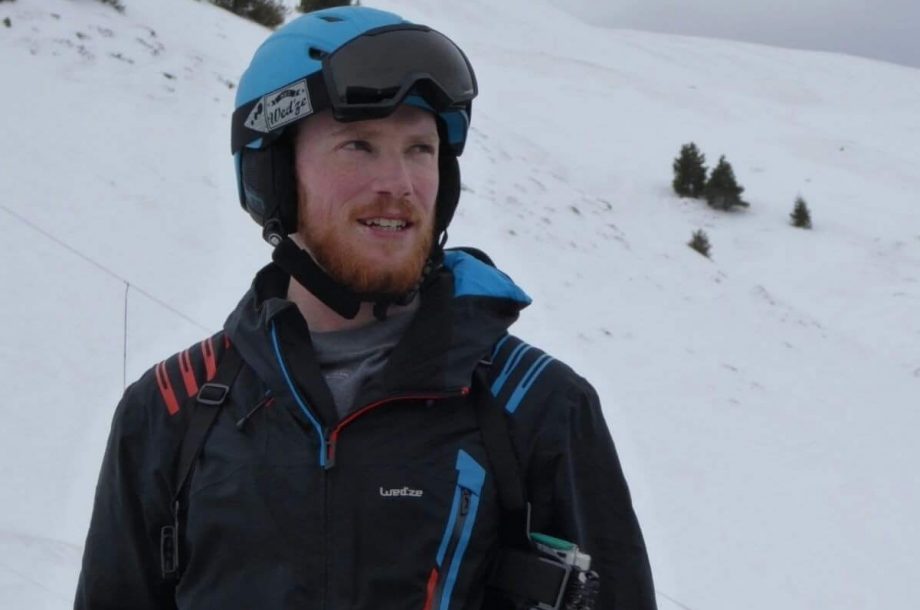
Recently, our Head of Photonics Joe Gannicliffe described Photonics (the science of light), as “a big opportunity” for future technology.
We sat down with Joe to discuss his role and the work CSA Catapult is doing with compound semiconductors, in areas that will positively impact everyone’s lives.
How did your career path lead you to your role at CSA Catapult?
My Bachelor’s degree is in Natural Sciences (Physics, Maths and Anthropology), and I have a Masters in Lasers and Atomic Physics. I didn’t do a PhD and went straight into industry.
In my first role, I developed high power lasers to cut, drill and weld through metal. In my second role I worked on imaging sensors (like the ones in our phones but larger, higher quality and much more resilient), creating cameras for space satellites that are used for earth observation, helping to monitor global climate change trends.
This role covers both these technologies, plus everything else to do with light! I’ve always taken a generalist approach and tried to build a broad set of knowledge and skills, with a few key specialisms. I’ve moved away from practical roles to more technical coordinating and leadership roles.
This position allows me to maintain an overview and be involved with a variety of topics. It also enables me, among others, to translate and advocate how Photonics will impact individual lives and society.
We talk a lot about science, but Photonics is a niche area, that is relatively unknown to the wider population, so we need to promote the details of how it can be applied and outline the benefits it can bring. That wider endorsement is important to enable further funding in developing key Photonics technologies.
What are you most excited about in the world of Photonics?
I’m excited about applications in Medical Photonics because they can have such a positive impact in helping people make quick and accurate diagnoses, whilst tracking their health in real-time. Diagnostic Photonics applications for example, include breath analysis to pick up potential biomarkers of cancer, meaning earlier detection and less invasive screening with faster results delivered to the patient. Advances in wearables mean that we can track things like blood glucose non-invasively with optical sensors, assisting those with diabetes.
In other areas of Medical Photonics, we can use blasts of high-power UV-C light for sanitation, for example when cleaning medical instruments, which kills viruses and other pathogens reducing the risk of infections. This is extremely relevant right now with the current COVID-19 pandemic and despite the horrible situation I am hopeful that science can find the answers.
Photonics is a huge gamechanger.
What activities are you working on at CSA Catapult?
We’re working in a variety of different areas that provide the opportunity to make a big impact. A big one is Perception Sensing required for autonomous vehicles.
Perception sensors are effectively replacing the eyes of the human and enable the vehicle to make sense of its surroundings. LiDAR technology (Light RADAR) is a Photonics sensing technology that can create 3D maps of the environment, providing additional depth of information over imaging sensors alone and increased accuracy and precision over RADAR. Advances in processing and AI are then required to interpret that data in order to give relevance to the information captured. For example, these systems need to be able to tell the difference between inanimate objects like lampposts and stationary humans at distance. This can only be done through sensor fusion and a human understanding to direct the vehicle to change its course of direction.
In the next five to ten years, we can expect to see a continued progression from testing on closed roads and simulations, to trials in confined environments such as well-defined airport shuttle routes, to eventually become motorway lanes that are dedicated to autonomous vehicles. There could be platoons of semi-autonomous cars on a dedicated motorway lane before shifting control back to the human in busy, populated areas.
The Photonics team have recently had success in three Quantum bids – congratulations. Can you tell us more about Quantum?
Yes, we’ve had three successful Quantum bids and have recently had interviews for others.
Quantum allows you to operate at the single photon and electron level, which can be used for imaging and sensor systems with incredibly high sensitivity. You can also create Quantum keys to enable highly secure, steadfast communications. These codes precede the messages themselves and by using Quantum superpositions or Quantum entanglement you can effectively create a system that can detect eavesdropping – there is a threshold, and if eavesdropping is detected the communication can be aborted.
This has examples over conventional keys that are typically long, complex numbers that can be cracked with Quantum computing – it’s a Quantum arms race!
And when you’re not advocating Photonics applications and participating in bids, what are you up to?
I enjoy cycling and try to improve my distance and speed by completing different challenges each year. Last year I did the London 100 around the city and Surrey.
I lived in Grenoble, France, for 6 months so I’ve been taking French lessons at Cardiff University to try and maintain the language.
If you haven’t had it, Raclette is a popular food from that region. It’s a massive wheel of cheese that’s warmed up with a strip heater then melted over things like potatoes – I highly recommend.
Are you up to date on everything CSA Catapult? Don’t forget to follow us on Twitter and LinkedIn to ensure you’re in the loop.